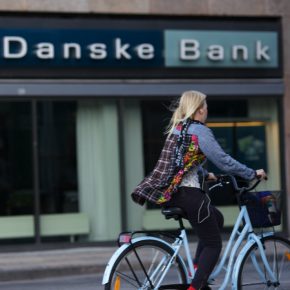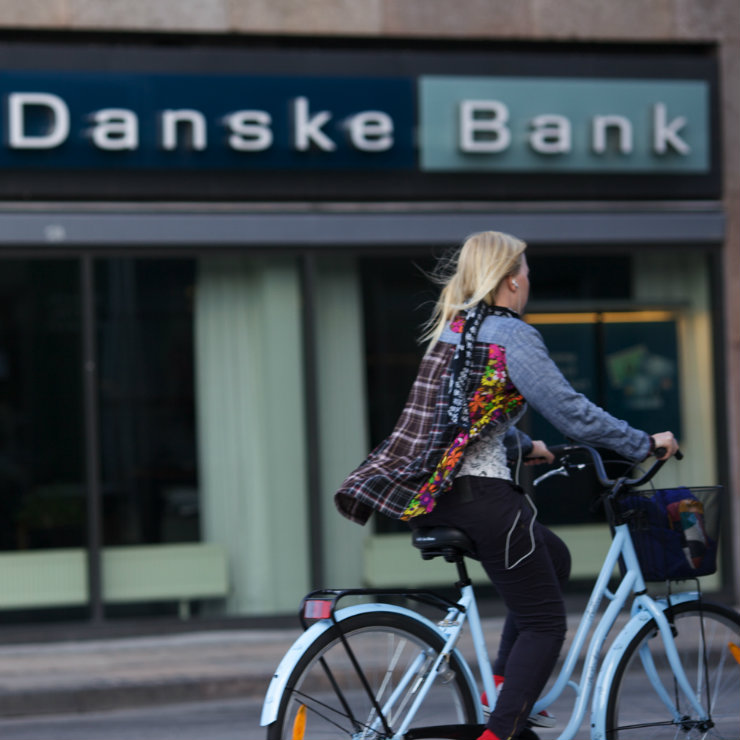German automotive industry at a crossroads
Category: Business

(Jimmy Baikovicius, CC BY-SA)
Swedbank told Bloomberg that its focus on domestic customers has protected it from the illicit flows that allegedly passed through Danske Bank’s business in Tallinn. “None of the names that have been out there have ever been customers of Swedbank, former or now,” Birgitte Bonnesen, Swedbank’s CEO, said. “But the most important thing is that we run a retail bank in Baltic countries.”
The Swedish Financial Supervisory Authority said it has not found any signs of wrongdoing at Swedish banks with operations in the Baltics in the wake of the Danske Bank scandal. The regulator is in talks with authorities in both Denmark and the Baltics to assess the situation and is also having talks with the Swedish banks.
While Sweden’s Swedbank and SEB have large operations in Estonia, Latvia and Lithuania, they focus on domestic retail clients and not on the non-resident customers that are at the center of the Danske scandal.
The claims come amid heightened anxiety in the region’s banking system. Denmark’s biggest bank, Danske, via its Estonian subsidiary, allegedly laundered EUR200bn of mainly illicit Russian cash via UK-registered front companies between 2007 and 2015.
The Danish watchdog launched an AML investigation into Danske Bank after it said „a large part” of the transactions were „suspicious.”
Sergei Ignatyev, ex-head of Russia’s central bank, estimates that about EUR50bn is lost to the Russian economy annually in this way. Globally, the UN Office on Drugs and Crime has estimated that criminal proceeds amounted to 3.6 per cent of global GDP, with 2.7 per cent, or EUR1.3 trillion, being laundered.
“A trillion dollars is flowing from poor countries to rich countries each year. That’s money that could be alleviating poverty and building infrastructure. Instead, it sits as overpriced, high end real estate in London and New York,” said OCCRP founder and chief editor, Drew Sullivan.
Investigators estimate the deposits in Danske may have been just 5 per cent of the total held in “non-resident” accounts in the Baltic states, with as much as EUR4 trillion potentially transited via the three countries since 1991. The French economist Thomas Piketty estimates that more than half of Russians’ total wealth is held offshore in this manner – about EUR700bn.
The Panama Papers showed how much illicit wealth is channeled via Britain’s Overseas Territories and Crown Dependencies and this helps explain why, by 2013, more than a quarter of Danske’s “non-resident clients” were British, while another tenth were from the British Virgin Islands.
The banking sector and financial market in Latvia have been attracting public attention. There are two main reasons for this: first, ABLV’s liquidation procedures and second, the detention of the National Central Bank’s Governor.
There are fears that the both cases could harm Latvia’s economy, which start recovering in 2017 after losing more than a fifth of its output during the global financial crisis.
From the 1990s to 2014 (when the Western sanctions were imposed on Russia for the first time), there were three “main drivers” in the Latvian economy:
During last four years transit and port activities have been heavily decreasing; the EU funds most probably will be reduced by about a third in the years to come.
The Latvian banking sector has been profitable both for the Latvian budget and the political system but since February 2018 the banking sector has been under pressure: the share of non-residents’ financial investments (according to the government’s intentions) is going to be reduced to about 5 per cent instead of present 40 per cent.
There are 16 banks in Estonia, which include 6 domestic banks and 10 foreign-controlled banks (with branches and subsidiaries). There are 18 commercial banks in Latvia, and 6 banks and 8 foreign bank branches (i.e. 14 in total) in Lithuania.
Estonian banking sector is dominated by two major Nordic commercial banks, Swedbank and SEB, owned by Swedish banking groups; these two banks control approximately 62 per cent of the financial services market. The third largest bank is an affiliate of the Finnish Nordea group, and the fourth largest bank is an affiliate of the Danish Danske Bank.



